
THE ISTANBUL POGROM OF SEPT. 6TH-7TH, 1955
FrontPageMagazine.com
By Alyssa A. Lappen
For 50 years, historians, diplomats and state department officials have touted Mustafa Kemal Ataturk as a great secular leader in a predominantly Muslim region, whose policies modernized and democratized Turkey, shaping it into a Western-style state.

But Ataturk was western only insofar as he implemented the Turkification of Gobineau, wherein he substituted the Turks for the Aryans, whose ideology had terrible results in the rise of European Nazism. Regardless, in 1955, barely 17 years after the dictator's death, a little-known pogrom, driven primarily by Islamic fanaticism, targeted the Greek population of Istanbul, with the intent of driving non-Muslims from Turkey.

From Wikipedia, the free encyclopedia: Istanbul Pogrom
Further information pools:
http://chicago.agrino.org/turkish_pogrom_against_the_greeks.htm
http://www.byzantinos.com/Photos_Pogrom_1955/1_Turkish_mob_soldiers_1955.html

Turkish mob attacking Greek property.
Location: Istanbul, Turkey
Date: 6–7 September 1955
Target: Property of the Greek population of the city.
Attack type: Pogrom
Death(s): 10+ killed
Belligerent(s): Tactical Mobilization Group (special forces), Democratic Party[1], National Security Service.[2]
The Istanbul Pogrom (also known as the "Istanbul Riots" or "Constantinople Pogrom"; Greek: Σεπτεμβριανά (The September Events); Turkish: 6–7 Eylül Olayları (Events of September 6–7)), was a pogrom directed primarily at Istanbul's Greek minority on 6–7 September 1955. The riots were orchestrated by the Turkish military's Tactical Mobilization Group, the seat of Operation Gladio's Turkish branch; the Counter-Guerrilla. The events were triggered by the news that the Turkish consulate in Thessaloniki, north Greece—the house where Mustafa Kemal Atatürk was born in 1881—had been bombed the day before.[3] A bomb planted by a Turkish usher of the consulate, who was later arrested and confessed, incited the events. The Turkish press conveying the news in Turkey was silent about the arrest and instead insinuated that Greeks had set off the bomb.
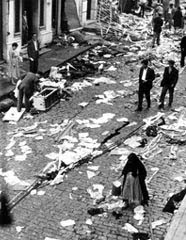
A Turkish mob, most of which had been trucked into the city in advance, assaulted Istanbul’s Greek community for nine hours. Although the mob did not explicitly call for Greeks to be killed, over a dozen people died during or after the pogrom as a result of beatings and arson. Jews and Armenians were also targeted.

The pogrom greatly accelerated emigration of ethnic Greeks (Turkish: Rumlar) from Turkey, and the Istanbul region in particular. The Greek population of Turkey declined from 119,822 persons in 1927,[4] to about 7,000 in 1978. In Istanbul alone, the Greek population decreased from 65,108 to 49,081 between 1955 and 1960.[4] The 2008 figures released by the Turkish Foreign Ministry place the current number of Turkish citizens of Greek descent at 3,000–4,000.[5] However according to the Human Rights Watch, the Greek population in Turkey was estimated at 2,500 in 2006.[6]
Some see the pogrom as a continuation of a process of Turkification that started with the decline of the Ottoman Empire,[7][8][9] rather than being a contemporary, bilateral issue. To back this claim they adduce the fact that roughly 40% of the properties attacked belonged to other minorities.[3]
THE TURKISH POGROM AGAINST THE GREEK COMMUNITY OF CONSTANTINOPLE:

Background:
The Greeks of Istanbul:
Constantinople (modern Istanbul) was the capital of the Byzantine Empire until 1453, when the city was conquered by Ottoman forces. A large Greek community continued to live in the multi-ethnic Ottoman capital city. The city’s Greek population, particularly the Phanariotes, came to play a significant role in the social and economic life of the city and in the political and diplomatic life of the Islamic but multi-ethnic, multi-religious Ottoman Empire in general. This continued even after rebellions against Ottoman rule in Greece and the establishment of an independent Greek state in 1829, although during the Greek independence war incidents of massacres against Greek clergymen were seen. A number of ethnic Greeks served in the Ottoman Imperial diplomatic service and were even leading politicians in the 19th and early 20th century.

Following the Greco-Turkish War (1919-1922), the collapse of the Ottoman Empire, and the establishment of the Republic of Turkey, the population exchange agreement signed between Greece and Turkey resulted in the uprooting of all Greeks in modern Turkey (and Turks in Greece) from where many of them had lived for centuries. But due to the Greeks' strong emotional attachment to their first capital as well as the importance of the Ecumenical Patriarchate for Greek and worldwide orthodoxy, the Greek population of Istanbul was specifically exempted and allowed to stay in place. Nevertheless, this population began to decline, as evidenced by demographic statistics.

Punitive Turkish nationalist exclusivist measures, such as a 1932 parliamentary law, barred Greek citizens living in Turkey from a series of 30 trades and professions from tailoring and carpentry to medicine, law and real estate.[1][page needed] The Wealthy Levy imposed in 1942 also served to reduce the economic potential of Greek businesspeople in Turkey.[3][8]

CONTEXT:
The pogrom was triggered by Greece's appeal in 1954 to the United Nations to demand self-determination for Cyprus. Britain had the ruling mandate over the mostly ethnic Greek island, and wanted the Cyprus dispute to be resolved without being taken to the United Nations Security Council, where it could be problematically framed as an anti-colonialist struggle.[8][10] To this end, Britain diplomatically encouraged Turkey to agitate Greece. The British ambassador to Greece also incited, saying in an August 1954 speech that Greco-Turkish ties were superficial, so nothing would be lost if, for example, something were to happen to Atatürk's house in Thessaloniki. More bluntly, an official of the Foreign Office said that some agitation would be much to Turkey's benefit. In any case, said parliamentarian John Strachey, Turkey had a large ethnic Greek minority in Istanbul as a card to play against Greece if she should consider annexing an independent Cyprus to Greece.[11]

Since 1954, a number of nationalist student and irredentist organizations, such as the National Federation of Turkish Students (Turkish: Türkiye Milli Talebe Federasyonu), the National Union of Turkish Students, and Hikmet Bil's (editor of the major newspaper Hürriyet) "Cyprus is Turkish" Association (Turkish: Kıbrıs Türktür Cemiyeti), had protested against the Greek minority and the Ecumenical Patriarchate.[7][8][9]

In 1955, a state-supported propaganda campaign involving the Turkish press galvanized public opinion against the Greek minority, targeting Athenogoras, the Ecumenical Patriarch of Phanar, in particular.[8][12] Leading the pack was Hürriyet, which wrote on 28 August 1955: "If the Greeks dare touch our brethren, then there are plenty of Greeks in Istanbul to retaliate upon." Ömer Sami Coşar from Cumhuriyet wrote on 30 August:[8]

Neither the Patriarchate nor the Rum minority ever openly supported Turkish national interests when Turkey and Athens clashed over certain issues. In return, the great Turkish nation never raised its voice about this. But do the Phanar Patriarchate and our Rum citizens in Istanbul have special missions assigned by Greece in its plans to annex Cyprus? While Greece was crushing Turks in Western Thrace and was appropriating their properties by force, our Rum Turkish citizens lived as free as we do, sometimes even more comfortably. We think that these Rums, who choose to remain silent in our struggle with Greece, are clever enough not to fall into the trap of four or five provocateurs.

Tercüman, Yeni Sabah, and Gece Postası followed suit.[12] The "Cyprus is Turkish" Association (CTA) stepped up activities in the weeks leading up to the riots, increasing the number of branches from three in August to ten by the time the pogrom took place. On September 4, Hikmet Bil ordered students at Taksim Square, the heart of the city, to burn Greek newspapers. The same day, Kamil Önal of the CTA—and the National Security Service—handed out to students twenty thousands banners emblazoned "Cyprus is Turkish".[13]

The day before the Tripartite London Conference (29 August–7 September 1955) began, Prime Minister Menderes claimed that Greek Cypriots were planning a massacre of Turkish Cypriots. Seeing the opportunity to extricate Britain, Prime Minister Harold Macmillan advised the Turkish delegates that they should be stern. Foreign minister Fatin Rüştü Zorlu paid heed to Macmillan and launched a harsh opening salvo, stating that Turkey would reconsider its commitment to the Treaty of Lausanne unless Greece reconsidered its position on Cyprus. The Greek delegates, surprised by harshness of the speech, blamed the British.[11]

Deflecting domestic attention to Cyprus was politically convenient for the Menderes government, which was suffering from an ailing economy. Although a minority, the Greek population played a prominent role in the city’s business life, making it a convenient scapegoat during the economic crisis in the mid-50s which saw Turkey's economy contract (with an 11% GDP/capita decrease in 1954).[8] The DP responded first with inflationary policies, then when that failed, with authoritarianism and populism.[8] DP's policies also introduced rural-urban mobility, which exposed some of the rural population to the lifestyles of the urban minorities. The three chief destinations were the largest three cities: Istanbul, Ankara, and Izmir. Between 1945 and 1955, the population of Istanbul increased from 1 million to about 1.6 million. Many of these new residents found themselves in shantytowns (Turkish: gecekondus), and constituted a prime target for populist policies.[8]

Finally, the conference fell apart on 6 September, the first day the subject of Cyprus would be broached at the conference,[14] when news broke of the bombing of the Turkish consulate (and birth place of Atatürk) in Greece’s second-largest city, Thessaloniki.[9]
THE POGROM:
PLANING:
The 1961 Yassıada Trial against Menderes and Foreign Minister Fatin Rüştü Zorlu exposed the proximate planning of the pogrom. Menderes and Zorlu mobilized the formidable machinery of the ruling Demokrat Parti (DP) and party-controlled trade unions of Istanbul. Interior minister Namık Gedik was also involved. According to Zorlu's lawyer at the Yassiada trial, a mob of 300,000 was marshaled in from a radius of 40 miles (60 km) around the city for the pogrom.[1]

The trial also revealed that the fuse for the consulate bomb was sent from Turkey to Thessaloniki on 3 September. The Yassıada Trial established that a twenty-year-old National Security Service agent named Oktay Engin was given the mission of installing the explosives, two sticks of gelignite, in the consulate's garden.[14][15][16] The consul M. Ali Balin allegedly first pressured consulate employee Hasan Uçar, but Engin was brought in when Uçar resisted. Both of them were arrested after the attack.[17]

Engin was born in Komotini (Turkish: Gümülcine) to Faik Engin (a well-known parliamentarian in the late '40s; the first person president Celal Bayar visited on his trip to Greece, says Oktay Engin) and became the first Turkish student to graduate from the Greek gymnasium. Turkish officials encouraged him to study law, offering him a scholarship, so that he could promote the interests of Turkish citizens in Greece. He thus entered Aristotle University of Thessaloniki in 1953, and was then given his mission. Engin said that he had been followed by Greek intelligence agents so closely during his law years that he could name one ("Triandafilos").[17][18]
In his 2005 book, Speros Vryonis documents the direct role of the Demokrat Parti organization and government-controlled trade unions in amassing the rioters that swept Istanbul. Ten of Istanbul’s 18 branches of the "Cyprus is Turkish" Association were run by DP officials. This organization played a crucial role in inciting anti-Greek activities. Most of the rioters came from western Asia Minor. His case study of Eskişehir shows how the party there recruited 400 to 500 workers from local factories, who were carted by train with third class-tickets to Istanbul. These recruits were promised the equivalent of 6 USD, which was never paid. They were accompanied by Eskişehir police, who were charged with coordinating the destruction and looting once the contingent was broken up into groups of 20–30 men, and the leaders of the party branches.[1][page needed][19]
While the DP took the blame for the events, it was recently revealed that the pogrom was in actuality a product of the Turkey's Tactical Mobilization Group; a clandestine special forces unit.[2][7] Four star general Sabri Yirmibeşoğlu, the right-hand man of General Kemal Yamak[20] who led the Turkish outpost of Operation Gladio under the Tactical Mobilization Group (Turkish: Seferberlik Taktik Kurulu), proudly reminisced about his involvement in the pogrom, calling it "a magnificent organization".[12][21]

EXECUTION:
Municipal and government trucks were placed in strategic points all around the city to distribute the tools of destruction (shovels, pickaxes, crowbars, ramrods and petrol), while 4,000 taxis were requisitioned from the Drivers Association and Motor Vehicle Workers' Trade Union (Turkish: Şoförler Cemiyeti ve Motorlu Taşıt İşçileri Sendikası) to transport the perpetrators. In addition, flags had been prepared by the Textile Workers' Union (Turkish: Tekstil İşçileri Sendikası).[13]
Special issue of İstanbul Ekspres. The headline reads "Our Father's house was damaged due to a bomb".

A protest rally on the night of September 6, organized by the authorities in Istanbul, on the Cyprus issue and the bombing of Atatürk's home was the cover for amassing the rioters. At 13:00, news reports of the bombing were announced by radio.[12] However, most people at the time did not have radios, so they had to wait until 16:30, when the daily İstanbul Ekspres, which was associated with the DP and the National Security Service (NSS), repeated the news in print.[16]

According to a September 2005 episode of the weekly show Files on the Greek Mega Channel, the accompanying photographs were seen by Salonican photographer Yannis Kyriakidis on September 4 (two days before the actual bombing). The consulate's wife had brought the film to his father's Kyriakidis Photo Shop to be printed. The photographs were then photomontaged, according to the program.[12][15]

On the day of the event, the editor, Gökşin Sipahioğlu, called the owner, Mithat Perin, asking for permission for a second run. The weather was bad, so Perin declined thinking the prints would not get sold. The newspaper's main dealer, Fuat Büke, soon called and offered to pay for the run in advance. By the time Perin went to inspect the Tan Press, 180,000 copies had already been printed. Sensing something fishy, Perin tore up the paper and stopped the run. The prototype was still intact however, and the workers secretly resumed printing after Perin left. They had eventually printed 300,000 copies (on paper stocked in advance), of which 296,000 were sold. This was far above the newspaper's average circulation of 30,000–40,000 (by comparison, the best-selling Hürriyet sold 70–80 thousand copies). Perin was arrested the next day. Gökşin Sipahioğlu later alleged the NSS had pressured him to do it, while Perin says Sipahioğlu himself was an agent.[22] Perin's innocence, however, was cast into doubt after intrepid journalist Uğur Mumcu published an excerpt from a 1962 letter between Perin and the undersecretary of the NSS, Fuat Doğu, stating that in his 25 years of journalism, he had acted in full knowledge of the NSS and had not refrained from doing anything.[23]

At 17:00, the pogrom started in Taksim Square, and rippled out during the evening through the old suburb of Beyoğlu (Pera), with smashing and looting of Greek commercial property, particularly along Yüksek Kaldırım street. By six o'clock at night, many of the Greek shops on Istanbul's main shopping street, İstiklal Avenue, were ransacked.[12] Many commercial streets were littered with merchandise and fittings torn out of Greek-owned businesses.
According to the eyewitness account of a Greek dentist, the mob chanted "Death to the Giaours" (English: infidels), "Massacre the Greek traitors", "Down with Europe" and "Onward to Athens and Thessaloniki" as they executed the pogrom.[citation needed]

The riot died down by midnight with the intervention of the Turkish Army and declaration of martial law. Eyewitnesses reported, however, that army officers and policemen had earlier participated in the rampages and in many cases urged the rioters on.
PERSONAL VIOLENCE:
Thirty-two Greeks were severely wounded. In addition, dozens of ethnic Greek women were raped,[7][9][12] and a number of men were forcibly circumcised by the mob.[1] 4,348 Greek-owned businesses, 110 hotels, 27 pharmacies, 23 schools, 21 factories, 73 Greek (and other Christian) churches and over a thousand Greek-owned homes were badly damaged or destroyed.[8][1][page needed] The American consulate estimates that 59% of the businesses were Greek-owned, 17% were Armenian-owned, 12% were Jewish-owned, 10% were Muslim-owned; while 80% of the homes were Greek-owned, 9% were Armenian-owned, 3% were Jewish-owned, and 5% were Muslim-owned.[12]

While the pogromists were not instructed to kill their targets, sections of the mob went much further than scaring or intimidating local Greeks. Between 13 and 16 Greeks and one Armenian (including two clerics) died as a result of the pogrom. 32 Greeks were severely wounded. Men and women were raped, and according to the account of the Turkish writer Aziz Nesin, men, mainly priests, were subjected to forced circumcision by members of the mob and an Armenian rite Christian priest died after the procedure.[1][page needed] Nesin wrote:[24]

A man who was fearful of being beaten, lynched or cut into pieces would imply and try to prove that he was both a Turk and a Muslim. "Pull it out and let us see," they would reply. The poor man would peel off his trousers and show his "Muslimness" and "Turkishness": And what was the proof? That he had been circumcised. If the man was circumcised, he was saved. If not, he was doomed. Indeed, having lied, he could not be saved from a beating. For one of those aggressive young men would draw his knife and circumcise him in the middle of the street and amid the chaos. A
 difference of two or three centimeters does not justify such a commotion. That night, many men shouting and screaming were "Islamized" forcefully by the cruel knife. Among those circumcised there was also a priest.
difference of two or three centimeters does not justify such a commotion. That night, many men shouting and screaming were "Islamized" forcefully by the cruel knife. Among those circumcised there was also a priest.MATERIAL DAMAGE AND COST:
The material damage was considerable, with damage to 5317 properties. Among these were 4214 homes, 1004 businesses, 73 churches, 2 monasteries, 1 synagogue, and 26 schools.[3] The Greek-owned portion is: 4,348 businesses, 110 hotels, 27 pharmacies, 23 schools, 21 factories, and 73 churches and over 1,000 homes.[citation needed]

Estimates of the economic cost of the damage vary from Turkish government's estimate of 69.5 million Turkish lira (equivalent to 24.8 million US$[25]), the British diplomat estimates of 100 million GBP (about 200 million US$), the World Council of Churches’ estimate of 150 million USD, and the Greek government's estimate of 500 million USD.[1][12]
CHURCH PROPERTY:
Ecumenical Patriarch Athenagoras I of Constantinople inside the ruins of the destroyed Orthodox church of Saint Constantine, Istanbul.

In addition to commercial targets, the mob clearly targeted property owned or administered by the Greek Orthodox Church. 73 churches and 23 schools were vandalized, burned or destroyed, as were 8 asperses and 3 monasteries. This represented about 90 percent of the church property portfolio in the city. The ancient Byzantine church of Panagia in Veligradiou was vandalised and burned down.[9] The church at Yedikule was badly vandalised, as was the church of St. Constantine of Psammathos. At Zoodochos Pege church in Balıklı, the tombs of a number of ecumenical patriarchs were smashed open and desecrated. The abbot of the monastery, Bishop Gerasimos of Pamphilos, was severely beaten during the pogrom and died from his wounds some days later in Balıklı Hospital. In one church arson attack, Father Chrysanthos Mandas was burned alive. The Metropolitan of Liloupolis, Gennadios, was badly beaten and went mad. Elsewhere in the city, Greek cemeteries came under attack and were desecrated. Some reports also testified that relics of saints were burned or thrown to dogs.
Witnesses
An eyewitness account was provided by journalist Noel Barber of the London Daily Mail on 14 September 1955:
“The church of Yedikule was utterly smashed, and one priest was dragged from bed, the hair torn from his head and the beard literally torn from his chin. Another old Greek priest [Fr Mantas] in a house belonging to the church and who was too ill to be moved was left in bed, and the house was set on fire and he was burned alive. At the church of Yeniköy, a lovely spot on the edge of the Bosporus, a priest of 75 was taken out into the street, stripped of every stitch of clothing, tied behind a car and dragged through the streets. They tried to tear the hair of another priest, but failing that, they scalped him, as they did many others.”

On the occasion of the pogrom's 50th anniversary, a seventy-year-old Mehmet Ali Zeren said, "I was in the street that day and I remember very clearly...In a jewelry store, one guy had a hammer and he was breaking pearls one by one."[26]

One famous eyewitness was James Bond novelist Ian Fleming, who as an MI6 agent was present under the cover of the International Police Conference on 5 September (which he ditched in favor of covering the riots for The Sunday Times). Fleming's account was published on 11 September bearing the title "The Great Riot of Istanbul". It has been said that Fleming may have been tipped off by Nâzim Kalkavan, who appears in 1957's From Russia with Love as "Darko Kerim"; the Istanbul station chief of the MI6. According to Fleming's biographer, John Pearson, Kalkavan was rather like Kerim bey.[27][28]
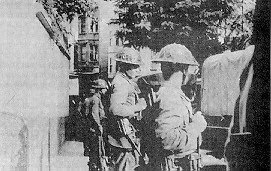
For some Turkish eyewitness accounts, read Ayşe Hür's article in Taraf.[12]
RESISTANCE:
There are accounts of protection offered to the minorities by their fellow citizens that were successful in fending off the mob. The most organized team rallied behind air force captain Reşat Mater. Mater happened to be off duty and visiting his home in Cevizlik's Muhasebeciler Street, which is right next to the rally point, İstanbul Caddesi. Mater first hid some of his neighbors in his house, then he took to the street with his gun and his uniform. The boys in the neighborhood joined him, bringing domestic implements as substitute weapons. The mob passed by after seeing the barricade.[29]

Mater later rose all the way to Commander of the Air Force, making him third in the military line of command. His son Tayfun, who witnessed the pogrom, maintains ties with those who survived and fled to Greece.[29]
SECONDARY ACTION:

While the pogrom was predominantly an Istanbul affair, there were some outrages in other Turkish cities.[12] On the morning of 7 September 1955 In İzmir (Smyrna), a mob overran the İzmir National Park, where an international exhibition was taking place, and burned the Greek pavilion.[7] Moving next to the Church of Saint Fotini, built two years earlier to serve the needs of the NATO Regional Headquarters' Greek officers, the mob destroyed it completely. The homes of the few Greek families and officers were then looted.

DOCUMENTATION:
Considerable contemporary documentation showing the extent of the destruction is provided by the photographs taken by Demetrios Kaloumenos, then official photographer of the Ecumenical Patriarchate. Setting off just hours after the pogrom began, Kaloumenos set out with his camera to capture the damage and smuggled the film to Greece.
REACTIONS:
On 7 September, the Menderes government closed the "Cyprus is Turkish" Association (CTA) and arrested its executives. A CTA detainee, and spy, named Kamil Önal had one of his CTA associates burn an intelligence report originating from the National Security Service (NSS) that was at the CTA office. In addition, a member from the Kızıltoprak branch, Serafim Sağlamel, was found to be carrying an address list of non-Muslim citizens. 34 trade unions were dissolved. The Minister of Internal Affairs resigned on September 10.[13] On September 12, the government blamed Turkish Communists for the pogrom, arresting 45 "card-carrying communists" (including Aziz Nesin, Kemal Tahir, and İlhan Berktay).[8][12] This type of "false flag" anti-Communist propaganda was a staple of the Counter-Guerrilla. When opposition leader İsmet İnönü delivered a speech criticizing the government for rounding up innocent people instead of the actual perpetrators, the communists were released in December 1955. An angry Menderes said that İnönü would not be forgiven for his speech, pardoning the communists.[11]

Oktay Engin and consulate employee Hasan Uçar were arrested on 18 September. Engin was first charged with executing the attack, but he presented an alibi so the charge was dropped to incitement.[17] He was detained for nine months. Three months later, the NSS exfiltrated him before the Greek courts sentenced him to 3.5 years. In addition, Turkey refused Greece's extradition request.[30]
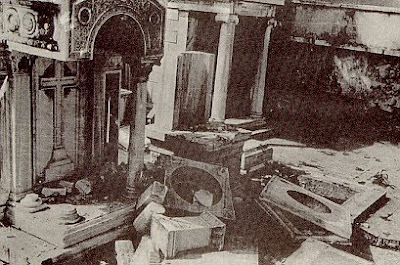
87 CTA leaders were released in December 1955, while 17 were taken to court on 12 February 1956. The indictment initially blamed the CTA only for inciting some students to burn Greek newspapers in Taksim Square. In response to police chief Kemal Aygün's question about the Cominform's role in the affair, Şevki Mutlugil of the NSS cooked a report, which concluded that the Comintern and Cominform had conspired to sabotage NATO. As proof, the prosecution submitted some brochures from the Communist Party of Turkey and a pair of letters from Nâzım Hikmet which called on the workers of Cyprus to stand against imperialism. To bolster the claims, the indictment claimed that NSS agent Kamil Önal had contacted the Comintern while on duty in Lebanon and defected, effectively exonerating the NSS.[13]

The remaining prisoners were released on 12 January 1957 for lack of evidence, by order of the Istanbul First Penal Court (Turkish: İstanbul 1. Ceza Mahkemesi).[13]
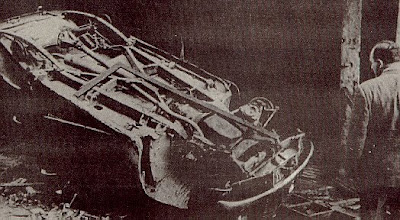
The chargé d’affaires at the British Embassy in Ankara, Michael Stewart, directly implicated Menderes’ Demokrat Parti in the execution of the attack. “There is fairly reliable evidence that local Demokrat Parti representatives were among the leaders of the rioting in various parts of Istanbul, notably in the Marmara islands, and it has been argued that only the Demokrat Parti had the political organisation in the country capable of demonstrations on the scale that occurred,” he reported, refusing to assign blame to the party as a whole or Menderes personally, however.[citation needed] The Foreign Office pointedly underscored the fact that British citizens were also victims of the attack.[11]

Although British ambassador to Ankara, Bowker, advised British Foreign Secretary Harold Macmillan that the United Kingdom should “court a sharp rebuff by admonishing Turkey”, only a note of distinctly mild disapproval was dispatched to Menderes.[9] The context of the Cold War led Britain and the U.S. to absolve the Menderes government of the direct political blame that it was due. The efforts of Greece to internationalize the human rights violations through international organizations such as the UN and NATO found little sympathy. British NATO representative Cheetham deemed it “undesirable” to probe the pogrom. U.S. representative Edwin Martin thought the effect on the alliance was exaggerated, and the French, Belgians and Norwegians urged the Greeks to “let bygones be bygones”. Indeed, the North Atlantic Council issued a statement that the Turkish government had done everything that could be expected.
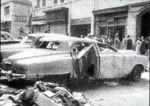
By popular vote, the Cyprus issue was dropped from the U.N. agenda on 23 September 1955. Britain had successfully avoided a potential diplomatic embarrassment.[11]

THE AFTERMATH:
The DP paid 60 million in compensation to those who could document their loss.[3]
Tensions continued and in 1958–1959, Turkish nationalist students embarked on a campaign encouraging the boycott of all Greek businesses. The task was completed eight years later in 1964 when the Ankara government reneged on the 1930 Greco-Turkish Ankara Convention, which established the right of Greek "etablis" (Greeks who were born and lived in Istanbul but held Greek citizenship) to live and work in Turkey. Around 12,000[31] ethnic Greeks without Turkish citizenship were deported from Turkey with two day's notice, and the Greek community of Istanbul shrunk from 80,000 (or 100,000 by some accounts) persons in 1955 to only 48,000 in 1965. Today, the Greek community numbers about 5,000, mostly older, Greeks.[32]
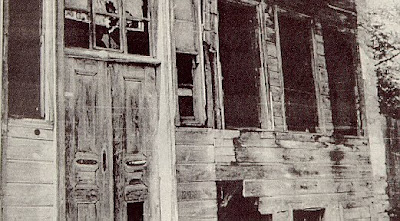
After the military coup of 1960, Menderes and Zorlu were charged at the Yassiada Trial in 1960–61 with violating the constitution. The trial also made reference to the pogrom, for which they were blamed. While the accused were denied fundamental rights regarding their defence, they were found guilty and sentenced to death by hanging.

The military prosecutor at the time, vice admiral Fahri Çoker,[33] kept documents and photographs of the event in order to educate posterity. He entrusted them to the Turkish Historical Society, stipulating that they be exhibited 25 years after his death. When the date passed and the documents were exhibited in 2005, a group of ultranationalist Ülküculer raided and defaced the exhibit[7][26] by hurling eggs at the photographs and trampling over them.[34]
The editor of the Istanbul Ekspres, Gökşin Sipahioğlu, went on to found Sipa Press; an international photo agency based in France. The owner, Mithat Perin, became a parliamentarian; he was already in the DP.[14]

Oktay Engin continued his studies at Istanbul University's Faculty of Law. His school in Salonica refused to share his transcript, so with only a certificate of showing she had completed the first year, the university senate allowed Engin to continue from the second. After graduation, he started an internship in Cyprus. However, he was summoned by Orhan Öztırak, the minister of internal affairs, to monitor Greek radio stations. Next he placed first in a government exam that led to his to becoming the governor (kaymakam) of the most important district, Çankaya. One year later, the chief of the police force, Hayrettin Nakipoğlu, invited him to be the chair of the Political Affairs Branch (Turkish: Siyasi İşler Şube Müdürü). Under normal conditions, reaching such a position would require 15–20 years of work starting from his position as a district governor. He remained in the police force thereafter, working his way up to the chief of the security department, and the deputy chief of the entire police force. Finally, in 1991 he was promoted to the governor of Nevşehir Province.[18] Engin rejects all allegations of culpability[17]—indeed, of even being a spy or any acquaintance of General Yirmibeşoğlu.[35]

In August 1995, the US Senate passed a special resolution marking the September 1955 pogrom, calling on the President of the United States Bill Clinton to proclaim 6 September as a Day of Memory for the victims of the pogrom.[citation needed]
REFERENCES:
1. ^ a b c d e f g h Speros Vryonis, Jr. The Mechanism of Catastrophe: The Turkish Pogrom of September 6–7, 1955, and the Destruction of the Greek Community of Istanbul, New York: Greekworks.com, 2005, ISBN 978-0-9747660-3-4.
2. ^ a b Birand, Mehmet Ali. “The shame of Sept. 6–7 is always with us,” Turkish Daily News, 7 September 2005.

3. ^ a b c d e Güven, Dilek (2005-09-06). "6–7 Eylül Olayları (1)" (in Turkish). Radikal. http://www.radikal.com.tr/haber.php?haberno=163380.
4. ^ a b http://www.demography-lab.prd.uth.gr/DDAoG/article/cont/ergasies/tsilenis.htm
5. ^ "Foreign Ministry: 89,000 minorities live in Turkey". Today's Zaman. 2008-12-15. http://www.todayszaman.com/tz-web/detaylar.do?load=detay&link=161291. Retrieved 2008-12-15.
6. ^ "From “Denying Human Rights and Ethnic Identity” series of Human Rights Watch" Human Rights Watch, 2 July 2006.
7. ^ a b c d e f Ergil, Doğu. “Past as present,” Turkish Daily News 12 September 2005.
8. ^ a b c d e f g h i j k Kuyucu, Ali Tuna (2005). "Ethno-religious 'unmixing' of 'Turkey': 6-7 September riots as a case in Turkish nationalism". Nations and Nationalism 11 (3): 361–380. doi:10.1111/j.1354-5078.2005.00209.x.
9. ^ a b c d e f Holland, Robert. "The Struggle for Mastery, 4 October 1955–9 March 1956," Britain and the Revolt in Cyprus, 1954–59, Oxford: Clarendon Press, 1998, pp. 75–77.

10. ^ Ferentinou, Ariana (2005-09-19). "Sept. 6-7 in the Greek media - Part II". Turkish Daily News. http://arama.hurriyet.com.tr/arsivnews.aspx?id=-560041. Retrieved 2008-10-26.
11. ^ a b c d e Güven, Dilek (2005-09-07). "6-7 Eylül Olayları (2)" (in Turkish). Radikal. http://www.radikal.com.tr/haber.php?haberno=163490&tarih=07/09/2005. Retrieved 2008-12-09.
12. ^ a b c d e f g h i j k l Hür, Ayşe (2008-09-07). "6-7 Eylül’de devletin ‘muhteşem örgütlenmesi’" (in Turkish). Taraf. http://www.taraf.com.tr/yazar.asp?mid=1821. Retrieved 2008-09-21.
13. ^ a b c d e Güven, Dilek (2005-09-08). "6-7 Eylül Olayları (3)" (in Turkish). Radikal. http://www.radikal.com.tr/haber.php?haberno=163591. Retrieved 2008-12-09.
14. ^ a b c Kıvanç, Taha (2005-09-08). "6-7 Eylül'de ne oldu? (2)" (in TR). Yeni Şafak. http://www.yenisafak.com.tr/arsiv/2005/EYLUL/08/tkivanc.html. Retrieved 2008-12-10.

15. ^ a b Ferentinou, Ariana (2005-09-12). "Sept. 6-7, 1955, in Greek Media". Turkish Daily News. http://arama.hurriyet.com.tr/arsivnews.aspx?id=-559476. Retrieved 2008-09-21.
16. ^ a b Aktar, Ayhan (2005-09-06). "Ellerinde sopalarla Beyoğlu'na girdiler" (in Turkish). Sabah. http://arsiv.sabah.com.tr/2005/09/06/gnd115.html. Retrieved 2008-12-10.
17. ^ a b c d Gungor, Nasuhi (2001-01-21). "Selanik'e düşen bomba" (in Turkish). Yeni Şafak. http://www.yenisafak.com/arsiv/2001/ocak/21/g4.html. Retrieved 2008-10-26.

18. ^ a b Mercan, Faruk (2003-09-08). "Bombacı da, MIT elemanı da değildim" (in Turkish). Aksiyon 457. http://www.aksiyon.com.tr/detay.php?id=2942. Retrieved 2008-09-21.
19. ^ Dilek Güven, Cumhuriyet Dönemi Azınlık Politikaları Bağlamında 6-7 Eylül Olayları, quoted in "20-30 kişilik organize birlikler" (in Turkish). Sabah. 2005-09-06. http://arsiv.sabah.com.tr/2005/09/06/gnd116.html. Retrieved 2008-12-10.
20. ^ Dündar, Can (2007-04-01). "Özel Harp'çinin tırmanış öyküsü" (in Turkish). Milliyet. http://www.milliyet.com.tr/2006/01/08/yazar/dundar.html. Retrieved 2008-09-21.
21. ^ Ergil, Doğu (2008-09-17). "The dark side of nationalism: Sept. 6-7 incident". Today's Zaman. http://www.todayszaman.com/tz-web/yazarDetay.do?haberno=153309. Retrieved 2008-09-21.

22. ^ Gonullu, Tayfun (2000-07-01). "6-7 Eylül üstüme kaldı" (in Turkish). Sabah. http://arsiv.sabah.com.tr/2000/07/01/g04.html. Retrieved 2008-12-10.
23. ^ Kıvanç, Taha (2005-09-07). "6-7 Eylül'de ne oldu? (1)" (in Turkish). Yeni Şafak. http://www.yenisafak.com.tr/arsiv/2005/EYLUL/07/tkivanc.html. Retrieved 2008-12-10. "25 seneyi bulan gazetecilik hayatımda açık veya gizli hiçbir faaliyetten geri durmadığımı herkesten evvel servisin bildiği kanaatindeyim."
24. ^ Aziz Nesin, Salkım Salkım Asılacak Adamlar (1987) quoted in: (Vryonis, 2005, p.225), as quoted in: (Gilson, 2005).
25. ^ Turkish currency exchange rates 1923–1990
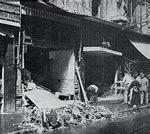
26. ^ a b Vick, Karl. “In Turkey, a Clash of Nationalism and History”, Washington Post, 30 September 2005.
27. ^ Kaplan, Sefa (2001-09-06). "Nâzım Kalkavan, Ian Fleming’in roman kahramanı oldu" (in Turkish). Hürriyet. http://webarsiv.hurriyet.com.tr/2001/09/06/25178.asp. Retrieved 2008-12-10.

28. ^ "James Bond 007". MI6. 2008-05-28. http://www.mi6.co.uk/sections/articles/ian_fleming_biography.php3. Retrieved 2008-12-10. "In Turkey, Fleming met the Oxford alumnus Nâzım Kalkavan whom he took a great liking to and roamed the country with. Kalkavan gave Fleming the spirit and knowledge of his upcoming novel and the characterisation of Bond's Turkish ally: Darko Kerim."
29. ^ a b Kilic, Ecevit (2008-09-07). "Rum komşularını yağmacılardan kurtaran Türk general" (in Turkish). Sabah. http://arsiv.sabah.com.tr/2008/09/07/haber,5776083CE95642CCB08849313BE51247.html. Retrieved 2008-12-25.
30. ^ Kilic, Ecevit (2008-09-07). "Bombayı atan da vali oldu" (in Turkish). Sabah. http://arsiv.sabah.com.tr/2008/09/07/haber,9F976615A218470C9CBFC64E35465AEC.html. Retrieved 2008-12-25.
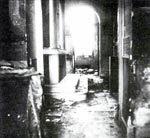
31. ^ The European Union and Border Conflicts: The EU and Cultural Change in Greek-Turkish Relations
32. ^ "Ethnic Greeks of Istanbul convene", Athens News Agency, 2 July 2006. According to figures presented by Prof. Vyron Kotzamanis to a conference of unions and federations representing the ethnic Greeks of Istanbul, the ethnic Greek population of Istanbul was then [July 2006] above the 5,000-person mark.
33. ^ "6-7 Eylül sergisine saldırı" (in Turkish). NTV-MSNBC. 2005-09-07. http://www.ntvmsnbc.com/news/340217.asp. Retrieved 2008-11-25.
34. ^ BÇ/EÜ (2008-09-18). "Eleven Taken Into Custody For Ergenekon Investigation". Bianet. http://bianet.org/english/kategori/english/109807/eleven-taken-into-custody-for-ergenekon-investigation. Retrieved 2008-09-21.
35. ^ Gungor, Nasuhi (2001-01-22). "Oktay Engin: Devletin ihmali var" (in Turkish). Yeni Şafak. http://www.yenisafak.com.tr/arsiv/2001/ocak/22/g5.html. Retrieved 2008-10-26.
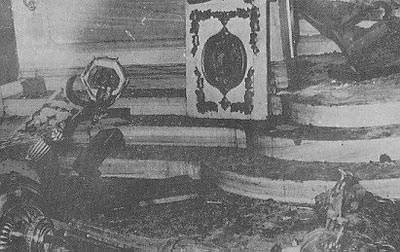
FURTHER READING:
* Güllapoğlu, Fatih. Tanksız Topsuz Harekât: Psikolojik Harekat (The Tankless, Cannonless Operation), Tekin Yayinevi, 1991. ISBN 9754780870. The "magnificent organization" quotes originates here, pg. 104.
* Güllapoğlu, Fatih. “Türk Gladio'su İçin Bazı İpuçları”, Tempo Dergisi, pg.24, 9–15 June 1991.
* Güven, Dilek. Cumhuriyet Dönemi Azınlık Politikaları ve Stratejileri Bağlamında 6-7 Eylül Olayları, İletişim, 2006. ISBN 9750504364. Based on author's doctoral dissertation, Nationalismus, Sozialer Wandel und Minderheiten : Die Ausschreitungen gegen die Nichtmuslime der Turkei from Ruhr University Bochum.

* The documentary that was shown at the defaced exhibit in 2005: "Utanç Gecesi: 6/7 Eylül 1955". Can Dündar. O gün. (mirror at Google Video (Adobe Flash video))
* Pogrom against Greek Society of Istanbul Pictures and text information based on events of 6th to 7th September of 1955 during the Pogrom against Greek Minority of Istanbul, TR
For more photographic documents of the destructive Septembriana events please go here:
http://picasaweb.google.com/eismakedon/TheIstanbulPogromOfSept671955TheDestructionOfTheGreekCommunityOfConstantinople#
Miltiades E. Bolaris, Sept. 6th, 2010, Chicago
Please also watch this video and listen to this wonderful song, sung in the Pontian dialect (spoken by the Black Sea Greeks)and translated also into Turkish:
http://hellenikathemata.blogspot.com/2010/09/in-dereyedereye-de.html
Δεν υπάρχουν σχόλια:
Δημοσίευση σχολίου